Mexico is a lively, multi-cultural country with a remarkable diversity of cultures, landscapes, cuisines, and activities.
It is also home to some of the most majestic castles on earth, each with unique architecture and history highlighting the country’s rich cultural heritage.
The castles in Mexico are proof of Mexico’s past and offer a peek into the lives of the people who constructed them and the eras they represent.
From ornate palaces to sprawling fortresses, the castles in Mexico are beautiful and draw visitors worldwide.
Are you planning a trip to Mexico, here are some of the best castles in Mexico.
Best Castles in Mexico
1. Chapultepec Castle
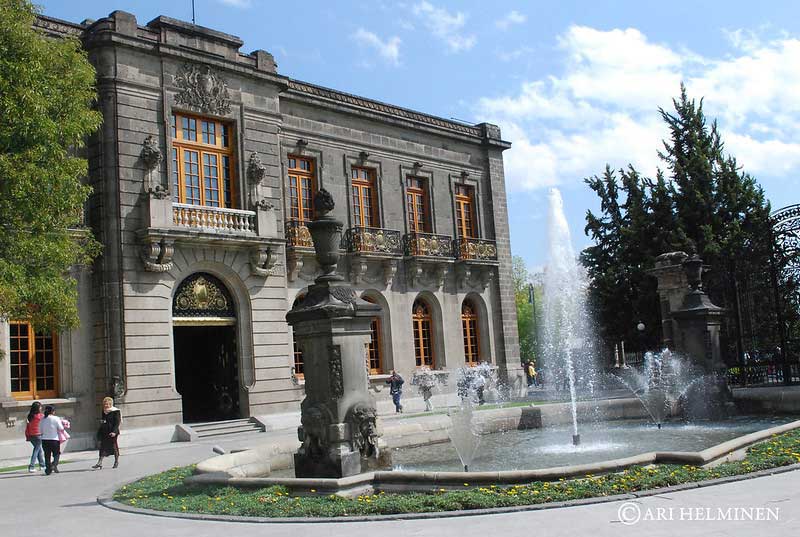
Chapultepec Castle
Chapultepec Castle is situated on top of Chapultepec Hill. The name Chapultepec originates from the Nahuatl word Chapoltepc which translates to “at the grasshopper’s hill.”
It is located in the center of Chapultepec Park in Mexico City at 2,325 meters above sea level. The site of the hill served as a sacred area for Aztecs.
The building on top of it has served many purposes during its history. It includes the imperial residence, the Military Academy, the Presidential home, the observatory, and currently the Museo Nacional de Historia.
The Chapultepec Castle is the only royal castle in the American continent and the only castle in North America that housed the Mexican Emperor Maximilian I and his consort Empress Carlota (sovereigns), at the time of the Second Mexican Empire.
Today, this National History Museum contains vital pieces and works of art that depicts Mexican history. Visitors can get a stunning view of Chapultepec Park and the whole city from the balconies. The museum is open from Tuesday to Sunday.
Address: Bosque de Chapultepec I Secc, Miguel Hidalgo, 11580 Mexico City, Mexico
2. Palacio de los Estucos (Palace of Stuccos, The Acanceh)
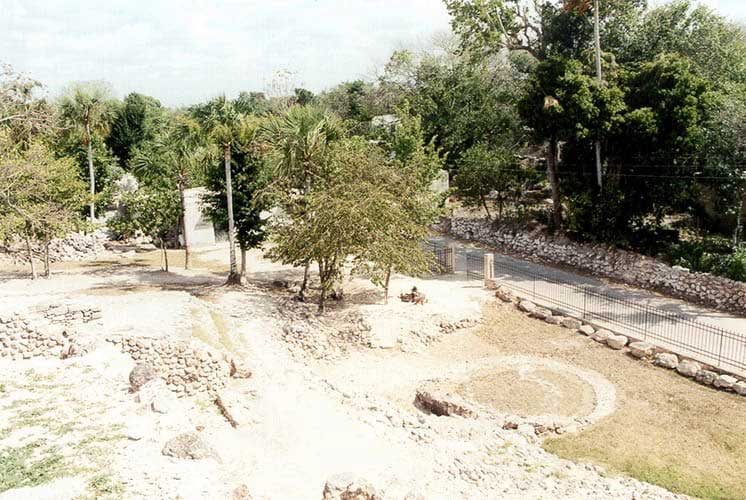
Palacio de los Estucos
The Palacio de los Estucos is among the five famous Maya history tour stops. It is one of the top castles in Mexico.
This palace, located in the Acanceh in Mexico’s Yucatán State, was a gorgeous castle where the previous Mayan kings used to rule back in the day.
This massive building measures 13 x 6 meters and consist of 4 bays with three doors on the north façade, which were later turned into windows.
The north façade is embellished with a frieze sandwiched by some cornices within small rectangle-shaped boxes.
Palacio de los Estucos has two rows with battlements serving as motifs. They are decorated in various paint colors with anthropomorphic objects modeled in stucco.
The outer perimeter of the palace and connected structures measures 164 feet wide by 20 feet high.
Palacio de los Estucos, artistically captivating, is close to the Zona Arqueológica de Acanceh and Acanceh’s marketplace, often called Mercado Municipal by the locals.
Address: C. 18 379, 97380 Acanceh, Yuc., Mexico
3. Fortaleza de San Juan de Ulua,
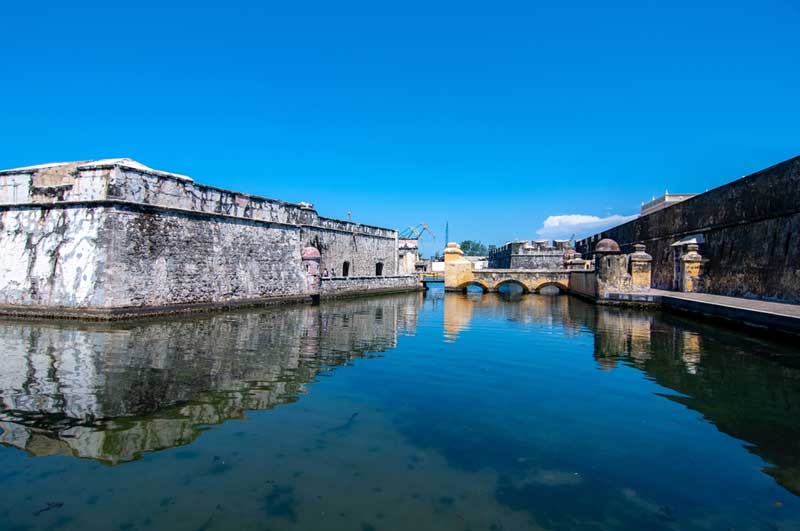
Fortaleza de San Juan de Ulua
Fortaleza de San Juan de Ulua, popularly known as Castillo de San Juan de Ula, is a fortress in Veracruz in eastern Mexico. It is among the highly visited castles in Mexico.
It was constructed with stone by the Spanish Empire. The construction began in 1535 and was completed in 1769. Since 1984, Fortaleza de San Juan de Ulua has accommodated a local museum.
It is a vast complex with prisons, fortresses, and an old palace. It is located on Isla San Juan de Ulu in the Gulf of Mexico.
Fortaleza de San Juan de Ulua was announced as a National Historic Monument by President Adolfo López Mateos in 1962. It was put on the Watch in 1996, 2000, and 2002.
Today the complex function as an art gallery, museum, auditorium, and restoration school. Fortaleza de San Juan de Ulua is among the most prominent fortification in America. It played significant roles in Spanish rule’s beginning and ending stages in Mexico.
The building also served as a barracks, naval workshops, and a prison. In the 19th and 20th centuries, it was the presidential headquarters of Mexico.
Castillo San Juan de Ulua has also been featured in Hollywood films such as ” Romancing the Stone,” a 1984 movie starring Douglas Michael, Turner Kathleen, and DeVito Danny.
Address: Cam. Escénico a San Juan de Ulúa S/N, Manuel Contreras, 91891 Veracruz, Ver., Mexico
4. Castillo de Nuevo Apolonia
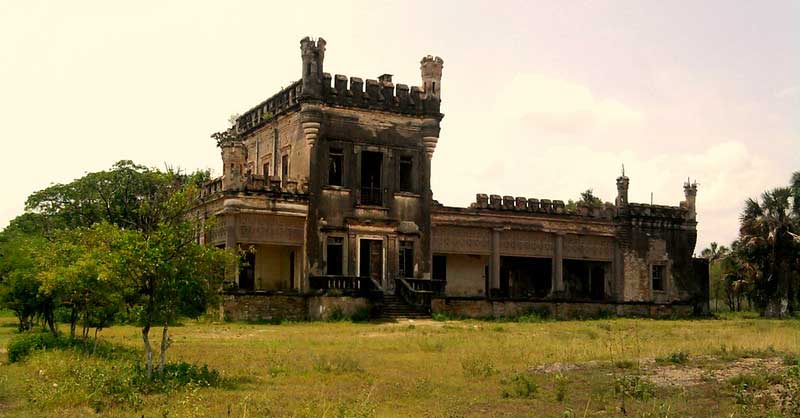
Castillo de Nuevo Apolonia
The Castillo de Nuevo Apolonia (New Apolonia Castle) is near the former El Naranjo farmhouse. You will discover this destination close to the Santa Clara River.
Castillo de Nuevo Apolonia is a stunning castle, even though it requires some restoration.
Castillo de Nuevo Apolonia, also known as Hacienda el Naranjo, is a lovely old stricture with plenty of history constructed during the Revolution.
This site is perfect for guests curious about Mexican culture’s history. This gorgeous place with a plethora of history is located on a ranch surrounded by orange trees.
Nowadays, the castle serves as a venue for social events or filming music videos.
Address: 89955 Nueva Apolonia, Tamaulipas, Mexico
5. Casa Colomos Bosque Colomos
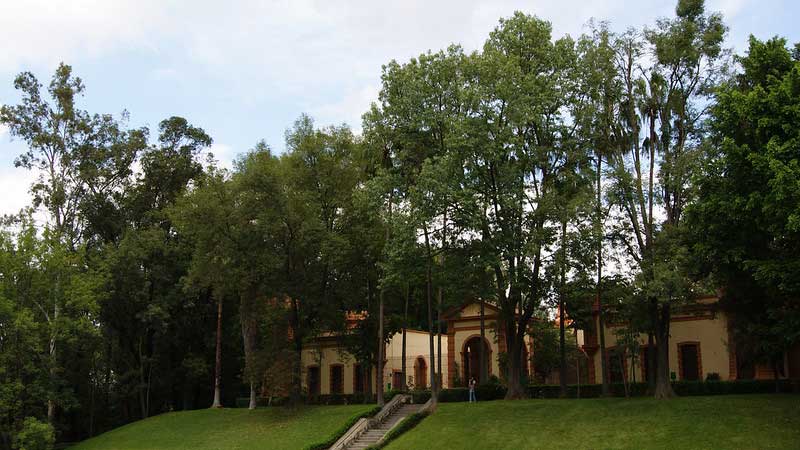
Casa Colomos Bosque Colomos
Bosque Colomos is a modern park located in the northeast of Guadalajara. The space was previously a forest, many of whose trees were utilized in the early construction of the city.
The area’s development began at the end of the 1800s to provide the city with water services.
The park has many green spaces, a Japanese garden, ducks, running tracks, and the Cultural Center Casa Colomos in the Castillo building, the city’s old waterworks.
You can sign up for classes in the cultural center, visit different exhibits, and watch movies.
Address: Chaco 3200, Providencia, 44460 Guadalajara, Jal., Mexico
6. Cabanas Cultural Institute
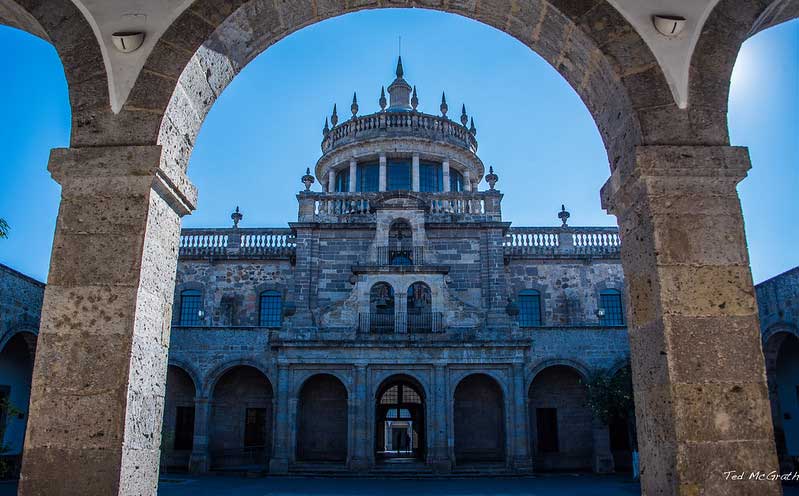
Cabanas Cultural Institutes
The Cabanas Cultural Institute, located at the eastern end of Plaza Tapatia, is among the architectural landmarks in Guadalajara and has been a Unesco World Heritage site since 1997.
On the ceiling and within the dome of the remarkable neoclassical Capilla Mayor (Main Chapel) is a most surprising series of modern murals by José Clemente Orozco, among his finest works and the top sights in Guadalajara.
The complex also features a collection of 340 other pieces by José and works by the big names of Mexico’s modern art scene.
The stunning building, comprising a labyrinth of secluded arched courtyards and exhibition spaces, was established by Bishop Don Juan Cruz Ruiz de Cabañas and developed by Spanish architect Manuel Tolsá in 1805.
Its first purpose was an orphanage and home for the sick, and it stayed so for 150 years, accommodating 500 children at once.
Free institute tours in six languages, including English, are hosted often. A hands-on José exhibit and a DIY art space keep children engaged and happy.
Address: : C. Cabañas 8, Las Fresas, 44360 Guadalajara, Jal., Mexico
7. Fortaleza de San Carlos

Fortaleza de San Carlos
Fortaleza de San Carlos, also known as Perote Castle, located in the skirts of the Cofre de Perote, is a colonial military fortress constructed as a reply to the scare of a possible raid from the English invaders who succeeded in invading Havana in 1762.
Its building was ordered by Joaquin de Montserrat, the then Viceroy of New Spain, as shield against a looming English attack that never occurred.
The fortress took seven years to build, starting in 1769 and ending in 1776. Since its completion in 1776, Fortaleza de San Carlos has served as the site for numerous historical events and as a prison compound.
The castle is where Guadalupe Victoria, the first Mexican president, passed away on 21 March 1843.
Today, Fortaleza de San Carlos is open to the public and remains in great shape despite the lack of care.
Address: Guadalupe Victoria, Centro, 91273 Perote, Ver., Mexico
8. Poliforum Mier y Pesado
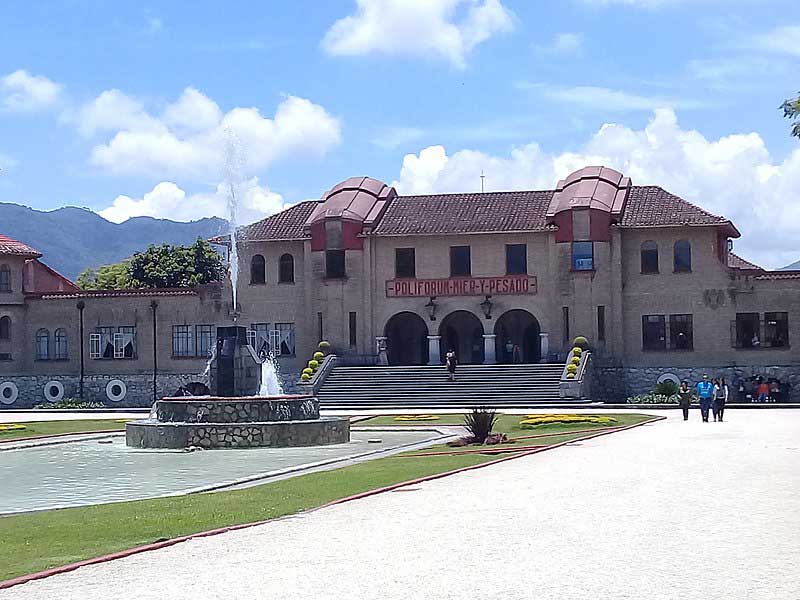
Poliforum Mier y Pesado
This palatial-style building dating to 1944 now houses numerous excellent exhibitions, the best being the ones dedicated to traditional costumes throughout Mexico and the children’s song composer Francisco Gabilonder Soler born in the city of Orizaba.
Poliforum Mier y Pesado was declared a “National Artistic Monument ” on February 2014.
This building is of immense architectural beauty and is a piece of the Mier y Pesado Foundation, also called “The Castle of Orizaba.”
It has a restaurant zone, museums, extensive gardens with figure-shaped trees adorning them, and a pond.
Kids will be delighted by the Soler exhibition, with its several colorful, cartoon-character-filled display. Also, in the building are many popular cafes and restaurants.
Address: Ote. 6 1653, Centro, 94364 Orizaba, Ver., Mexico
Want to know the best places to visit in Mexico for fun vacation? Here is a guide on things to Do in Monterrey, and things to Do in Acapulco, for a fun time.
9. Castillo Douglas, Aguascalientes
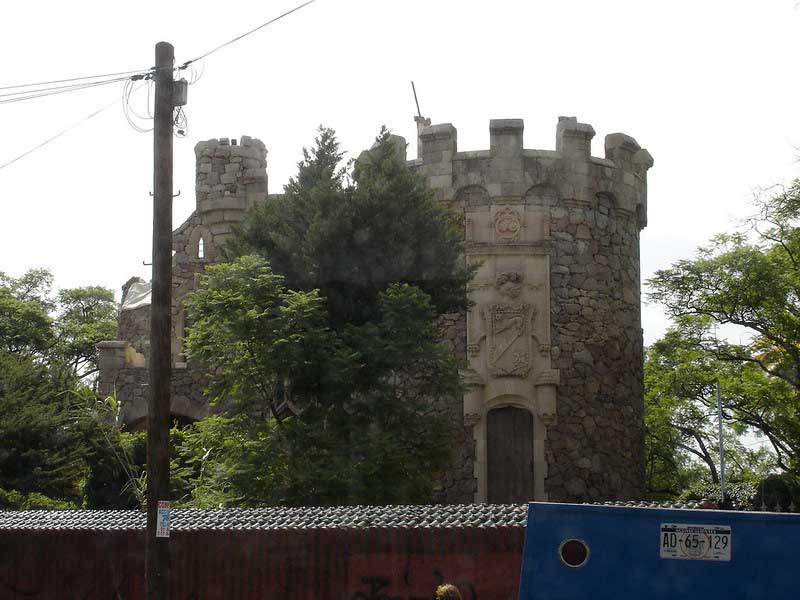
Castillo Douglas, Aguascalientes
Castillo Douglas, also called Castillo Ortega, is a captivating house resembling a castle. It is situated in the capital city of Aguascalientes, Aguascalientes City.
A Federico Mariscal designed the house completely from stone, and another, J. Refugio Reyes Rivas, supervised the construction work. It was used as a residence and was subsequently deserted and uninhabited.
This castle-like house was constructed for Edmundo Ortega Douglas. The construction started in 1923 when Ortega Douglas became engaged. The residence was kind of a Taj Mahal-like tribute to his love for his future missus with inspiration from his Scottish ancestors.
The residence resembles a Scottish medieval castle, featuring a stained glass window, a turret, a battlement, a drawbridge, and a castle.
There is an inscription above the entrance that says “Amore ne vanitate,” which means ‘Love, not vanity,’ describing the reason behind the building of this castle house. Edmundo Ortega Douglas engraved his and his lover, Carmen Llugano Casino, initials in a quarry on the entrance doors.
They resided in Castillo Douglas until their demise. One of their sons built a mechanical workshop here, which was later deserted in 1970.
A bit of fortune arrived in 1997 as it was renovated and became a restaurant bar. Unfortunately, it did not make a lot of sales, so it was shut down.
Then again, the residence was handed over to Oetega’s descendants, who put it up for sale in 2015.
Due to a lack of resources, nobody knows the plans for this remarkable structure. However, there is always hope that it will be converted into a tourist or cultural site because of its historic potential.
Although Castillo Douglas is not presently open to the public, visitors can see part of it over the walls that encircle the property and through the gates.
Address: Zona Centro, 20000 Aguascalientes, Mexico
10. Fort San Felipe
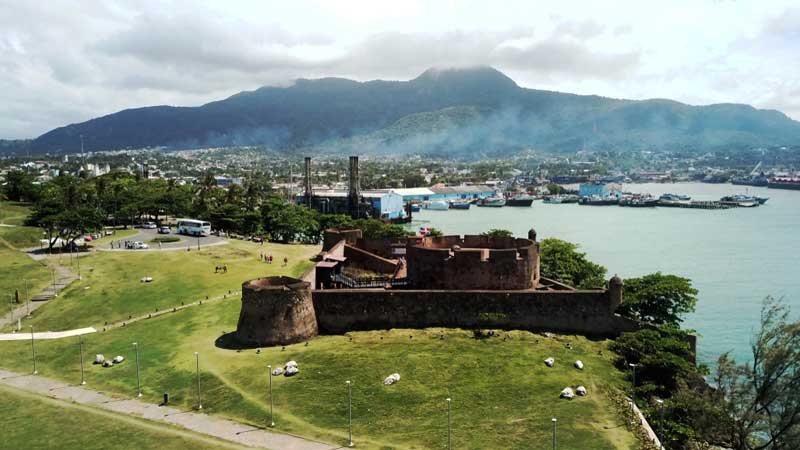
Fort San Felipe
Fort San Felipe was constructed in the 18th century due to an order given by the governor of Yucatan, Antonio de Figueroa y Silvia, to shield the city from being raided by the pirates going through Laguna de los 7 Colores.
The Fort is constructed in stone with a quadrangular structure and is encircled by a moat (now converted into a garden with figures of Spanish and Mayan) with a drawbridge at the central entrance.
It contains four bastions, one at each corner: San Antonio, Santa Ana, San Joaquin, and San Jose.
Architect Jorge Agostoni converted one of them into a museum and was subsequently declared a National Historic Landmark.
The Piracy Museum, dedicated to the history of the region, features archaeological Mayan and colonial items, including ammunition, weapons, daily utensils, maps, plans, etc.
Furthermore, guests will look at the mural designed by Elio Carmicheal, which represents the region’s most vital historical events.
The museum is open on Tuesday, Wednesday, Thursday, and Sunday, from 9 am to 7 pm, and Friday and Saturday from 9 am to 8 pm.
Address: Calle Avenida General Gregorio Luperon, Puerto Plata 57000 Dominican Republic
11. The Palacio de Bellas Artes (Palace of Fine Arts)
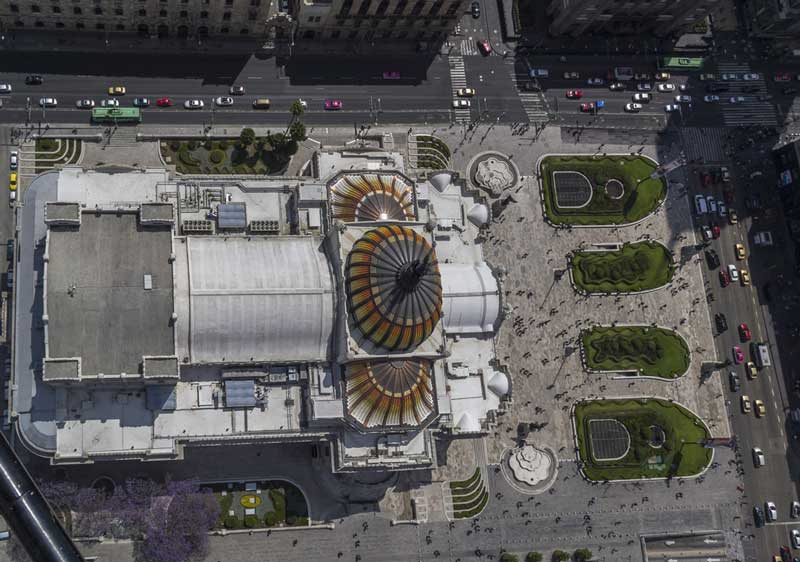
Palacio de Bellas Artes
The de Bellas Artes (Palace of Fine Arts) is the most vital cultural center in Mexico City and the remaining parts of Mexico.
It is situated on the west side of the historic center of Mexico City adjacent to Alameda Central Park.
The First National Theater of Mexico was constructed in the late 1800s. However, it was torn down in favor of a more luxurious building for the Centennial of the Mexican War of Independence in 1910.
The original design and construction were carried out by Italian architect Adamo Boari in 1904. But difficulties arising from the soft subsoil and the political issues before and during the Mexican Revolution prevented and ceased construction completely by 1913.
Construction started again in 1932 under Mexican architecture Federico Mariscal and was finished in 1934.
The exterior of the building is mainly Art Nouveau and Neoclassic, while the interior is mainly Art Deco.
The Palacio de Bellas Artes is popularly known for its murals by Diego Rivera Siqueiros and others and the numerous exhibitions and theatrical performances its holds, including the Ballet Folklorico de Mexico.
Address: Av. Juárez S/N, Centro Histórico de la Cdad. de México, Centro, Cuauhtémoc, 06050 Ciudad de México, CDMX, Mexico
12. Palacio Municipal de Monterrey
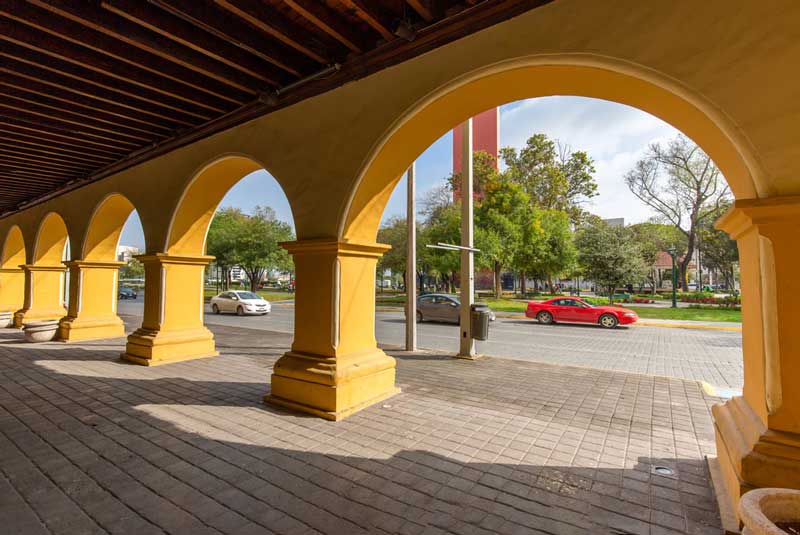
Palacio Municipal de Monterrey
The Palacio Municipal de Monterrey (Monterrey City Hall) is a massive building made of concrete and steel situated at the southern end of the Macroplaza. It is in Monterrey, the capital city of the northeastern Nueva Leon.
Palacio Municipal de Monterrey stands out due to its stark contrast to the adjacent Old Municipal Palace and the Catedral Metropolis.
The Palacio Municipal, established in 1976, is home to a statue of Ignacio Zaragoza riding a horse.
This castle-like building serves as Monterrey’s city hall and is a popular landmark in the city. Numerous spaces of the Palacio Municipal de Monterrey are open to the public, including a tiny museum.
Make sure to stop by this beautiful city hall if you are planning on visiting Monterrey.
Address: Ignacio Zaragoza Sur s/n, Centro, 64000 Monterrey, N.L., Mexico
13. The Chautla Hacienda (el castillo)
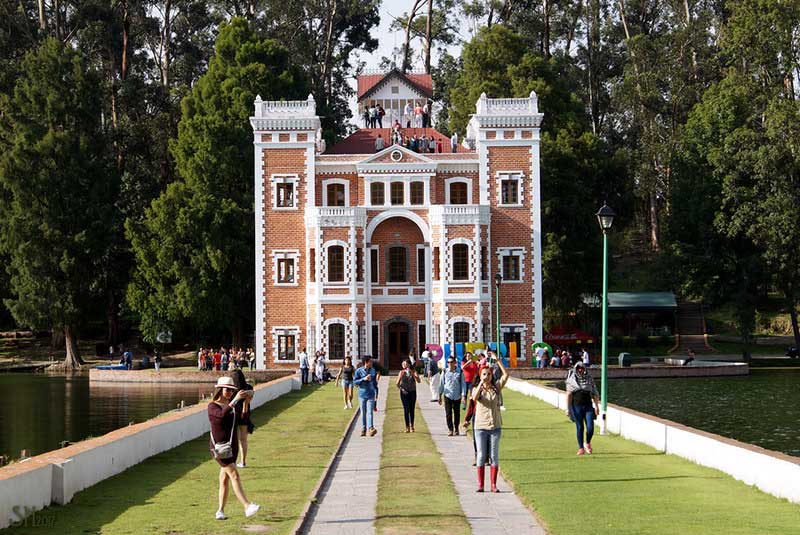
Chautla Hacienda (el castillo)
The Ex-Hacienda de Chautla is an unexpected but pleasant attraction in Mexico. This structure, frequently referred to as “el Castillo'”(the castle) by the locals, is a unique British residency in the San Martin Texmelucan Valley. It is one of the unique castles in Mexico.
The Chautla Hacienda was previously a large extension of farmland in the San Martin Texmelucan Valley in Puebla, Mexico.
It was established in the 1700s, mainly producing grains. In the 1800s, it became the property of an Englishman called Thomas Gillow.
He transferred the property to his son, Eulogio Gillow, who emerged as Antequera’s first archbishop. Since then, el castillo has remained a fairly famous landmark thanks to its appearance in a few telenovelas.
The museum contains paintings, photographs, furniture, and other objects displayed among the old rooms of the house, including the kitchen, the saloon, the dining room, and one of the bedrooms.
The site also offers numerous activities, such as camping, picnicking, and sport fishing, and rents facilities for occasions.
The English-style house draws numerous visitors, and its roof is open to the public. It also has a restaurant called “El Castillo,” specializing in trout dishes.
Address: Carr. Federal México-Puebla Km. 4-5, 74135 San Lucas el Grande, Pue., Mexico
14. The Palace of Cortés (Palacio de Corés)
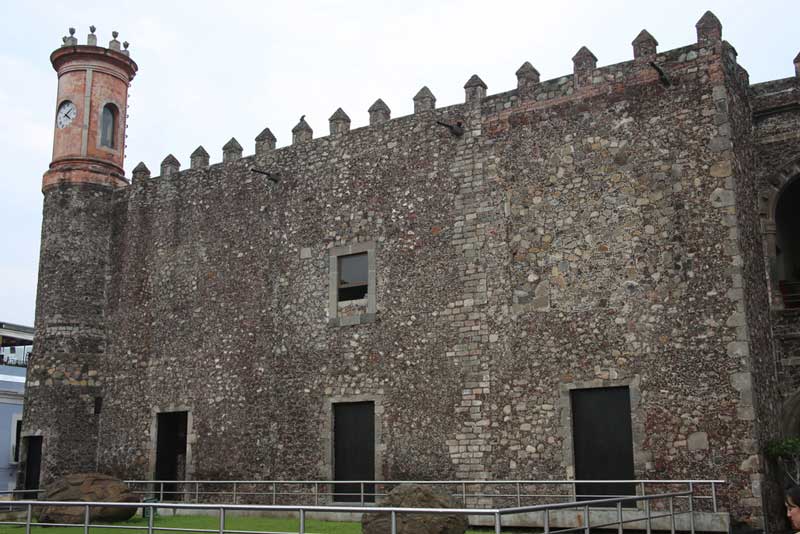
Palace of Cortés (Palacio de Corés)
The Palace of Cortés, constructed between 1523 and 1528, is the oldest preserved colonial-era civil structure in the continental Americas.
The architecture is a mix between Gothic and Mudéjar typical of the early 1500s colonial architecture.
The building started as a fortified residence for conqueror Hernán Cortès and his second wife, Doña Juana Zuñiga.
It was constructed in 1526 over a Tlahuica Aztec tribute collection that the Spanish destroyed during the conquest.
Hernán replaced it with a private residence to affirm authority over the newly conquered peoples. As Hernán’s residence, it reached its height in the 1530s, but the family ultimately deserted it due to ongoing legal issues.
In the 1700s, colonial authorities renovated the structure and used it as a jail and barracks. During the Mexican War of Independence, it housed prisoners such as José Maria Morelos y Pavón.
After that, it became the seat of government for Morelos until the late 1900s, when the state government packed out, and the structure was redone and turned into the present Museo Regional Cauhnahuac or regional museum containing exhibits about the history of Morelos.
Address: Francisco Leyva 100, Cuernavaca Centro, Centro, 62000 Cuernavaca, Mor., Mexico
Planning to explore Mexico? Get the best attractions and activities in Mazatlan, Rosarito, and Ensenada for a fun vacation.
Plan Your Trip to Mexico
The castles in Mexico are among the most famous tourist attractions in the country. With their picturesque views and unique architecture, they are certain to make your visit to Mexico memorable.
Whether you are a history lover or simply love beautiful architecture, exploring these Mexican castles will render you speechless and leave you in awe.
Start planning your trip to Mexico today!
